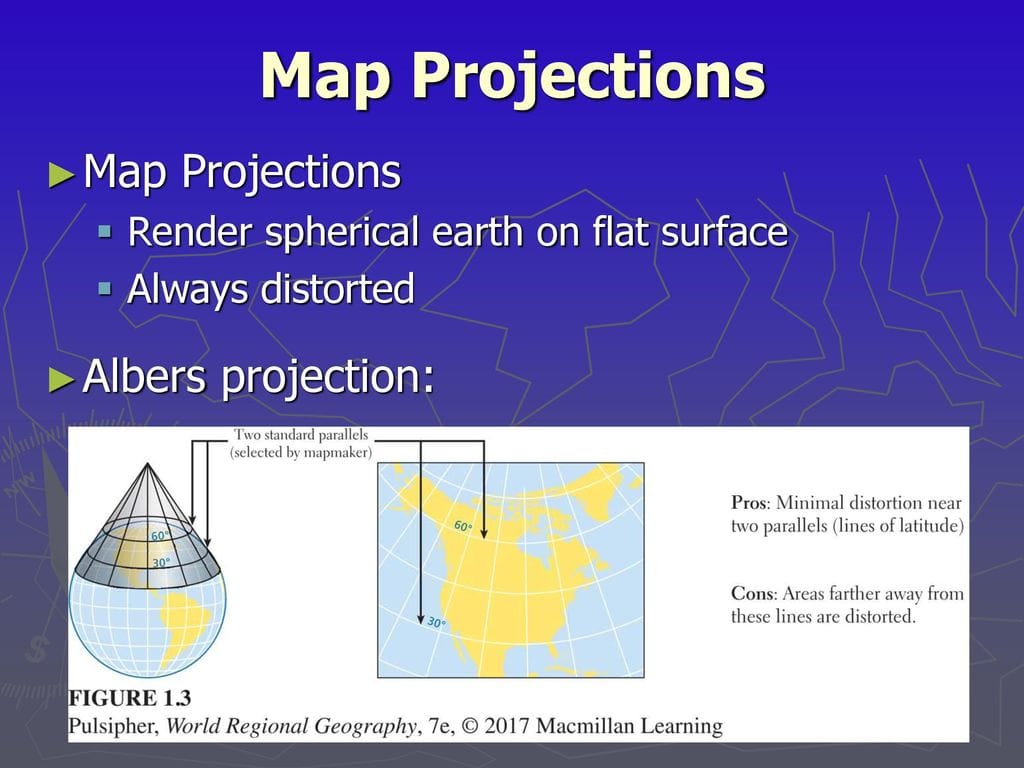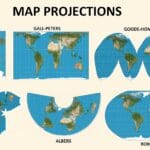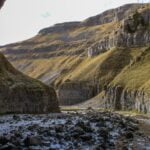Unveiling the Goode Homolosine: A Projection Focused on Area
The Goode Homolosine projection stands out in the world of cartography for its unique approach to representing the Earth’s surface. Unlike projections that prioritize shape or distance accuracy, the Goode Homolosine prioritizes the preservation of area. This means that while landmasses might appear stretched or compressed, their size relative to other landmasses on the map accurately reflects their proportions on the globe.
The Art of Compromise: Balancing Area and Shape
Imagine trying to flatten an orange peel. You’ll inevitably encounter some tearing or stretching to make it lie flat. Map projections face a similar challenge. The Goode Homolosine, classified as an “equal-area” projection, tackles this challenge by making calculated compromises.
To maintain area accuracy, the projection introduces interruptions in the representation of the oceans. Imagine slicing the orange peel strategically to minimize tearing. These interruptions, while visually jarring to some, allow for a more accurate depiction of landmass sizes compared to projections like the Gall-Peters.
Delving into Distortion: Where the Goode Homolosine Falters
While the Goode Homolosine excels at preserving area, it’s essential to understand its limitations. Some experts believe that these limitations arise from the inherent challenge of representing a three-dimensional sphere on a two-dimensional plane. Here’s a closer look:
Shape Distortion: The most noticeable distortion is in the shapes of landmasses, particularly at high latitudes and along the edges of the interrupted zones. Continents like Antarctica and Greenland can appear stretched horizontally, while areas near the projection’s interruptions might seem compressed or discontinuous.
Directional Challenges: Navigating with a Goode Homolosine projection can be tricky. True directions are only maintained along the central meridian of each lobe and along the equator. This means that representing angles accurately, which are crucial for navigation and understanding spatial relationships, is not possible with this projection.
Distance Distortion: Similar to directions, distances on the Goode Homolosine map are generally distorted, except along the central meridians and the equator. This makes the projection unsuitable for applications requiring accurate distance measurements.
The Goode Homolosine in Action: Ideal Applications
Despite its distortions, the Goode Homolosine projection proves invaluable for specific cartographic purposes:
Thematic Mapping: The projection’s strength lies in its ability to accurately represent data distributions across the globe. This makes it ideal for thematic maps focusing on topics like population density, resource allocation, or the spread of diseases.
Global Comparisons: When comparing the size of different regions or countries, the Goode Homolosine ensures that the visual representation accurately reflects real-world proportions, preventing misleading interpretations.
Beyond the Homolosine: Exploring Other Projections
The Goode Homolosine is just one of many projections cartographers use to represent the Earth. Each projection comes with its own set of strengths and weaknesses. For instance, while the Goode Homolosine preserves area, a conformal projection prioritizes preserving angles. Understanding these trade-offs helps us choose the most appropriate projection for a specific purpose.
Navigating the World of Projections: A Continuous Journey
As cartography continues to evolve, researchers are constantly seeking ways to refine existing projections and develop new ones. The Goode Homolosine, with its unique approach to balancing area and shape, serves as a testament to this ongoing exploration. By understanding its strengths and limitations, map readers can critically analyze spatial data and appreciate the complexities of representing our spherical world on a flat surface.
- Crypto Quotes’ Red Flags: Avoid Costly Mistakes - June 30, 2025
- Unlock Inspirational Crypto Quotes: Future Predictions - June 30, 2025
- Famous Bitcoin Quotes: A Deep Dive into Crypto’s History - June 30, 2025
















